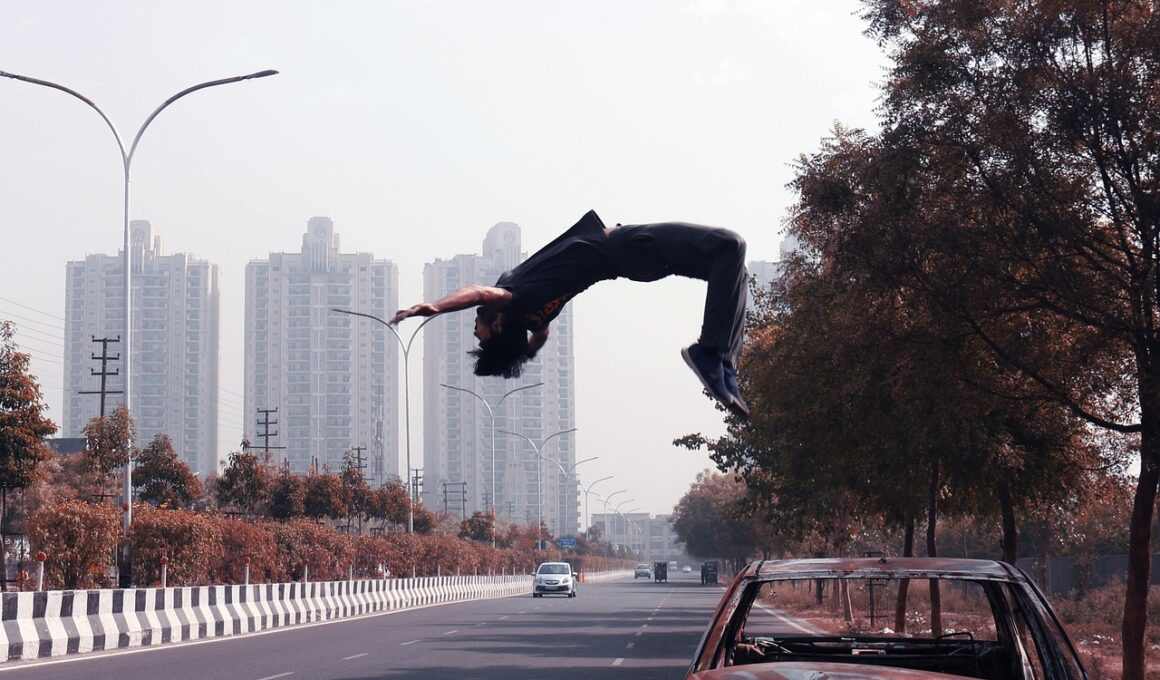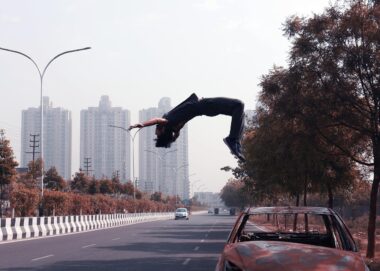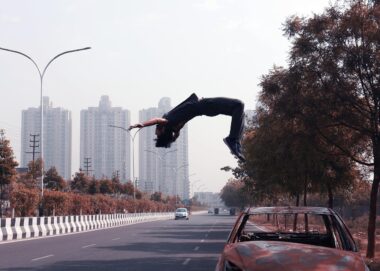Comparing Trail Running vs Parkour Shoes: Which Is Better?
When it comes to practicing parkour, the choice of footwear plays a crucial role in performance and safety. Parkour shoes are designed with specific features catering to the demands of jumping, landing, and running over various urban terrains. On the other hand, trail running shoes offer cushioning, grip, and durability, but they might not meet all parkour requirements. Impact absorption is essential for parkour as it directly affects landing comfort and injury prevention. Shoes designed for parkour generally reflect a balance between cushioning and flexibility, allowing the practitioner to navigate their environment with agility. Trail running shoes, while offering good traction on rough surfaces, often prioritize protection over flexibility, potentially hindering movement. A foot that can flex and feel the ground is critical for executing precise movements. An essential aspect of choosing the right shoe is understanding your needs as a parkour athlete. If you are consistently practicing precision jumps, shoes providing a more minimalist feel may suffice. Be sure to evaluate how different shoes interact with various surfaces, and your style of practice. Selecting shoes based on these factors leads to improved performance and enhanced enjoyment.
Ultimately, both parkour and trail running shoes serve specific purposes tailored to their respective activities. While trail running shoes excel in protecting the foot from rocks and harsh terrains, they may fall short in providing the necessary flexibility and grip that parkour demands in urban environments. One of the significant differences lies in the soles of the shoes. Parkour shoes often have flatter soles, designed to enhance the ground feel and provide better traction for executing various movements. In contrast, trail running shoes focus more on cushioning and shock absorption, which may not align with the quick footwork needed in parkour. When testing shoes, consider your usual landing spots and the surfaces you frequently practice on. The terrain can vastly affect how a shoe performs, influencing factors like grip and durability. Ensure you try on different pairs to understand which fit your foot shape and activity the best. Getting it wrong might lead to discomfort or even injuries over time. With the right shoe, however, you’ll feel more confident as you continue building your skills in parkour, finding joy and freedom in navigating your surroundings.
Evaluating Comfort and Fit
Comfort is one of the most crucial aspects when choosing shoes for parkour. A properly fitting shoe will prevent blisters and provide the necessary support for your foot during various movements. It is advisable to try on shoes at the end of the day when your feet are slightly swollen, as this will give you a better sense of how they will fit during physical activity. Look for a shoe that provides snugness around the midfoot, yet allows your toes to wiggle freely in the toe box. Pay attention to the shoe’s weight; lightweight options can enhance agility and ease of movement. Heavy shoes may hinder performance, especially during dynamic movements. Moreover, some shoes come with added arch support, which could be beneficial depending on your foot type. For flat-footed individuals, minimal support can cause discomfort, while those with high arches may require more cushioning. It’s essential to evaluate whether your chosen shoe will complement your foot’s structure, thus enhancing overall performance. If possible, take them for a test run and try executing some basic parkour movements on different surfaces before making your final decision.
Another important factor in selecting footwear is durability. When practicing regular parkour, your shoes undergo significant wear and tear from different terrains and surfaces. The materials used in shoe construction significantly influence their longevity. Parkour shoes often feature reinforced uppers and durable outsoles to resist scuffing and damage from various impacts. Look for shoes made from materials such as synthetic fibers or leather, which tend to withstand the rigors of the sport. Meanwhile, trail running shoes utilize durable rubber compounds in their soles to ensure good traction in wet conditions, but may not hold up as well on abrasive surfaces like concrete. As you practice, you may notice certain wear patterns that indicate whether your shoes continue to support your activities. Eventually, investing in a quality pair of parkour-specific shoes will pay off in terms of performance and safety. Alongside the shoe material, take note of the stitching; well-constructed shoes should have tight stitching that prevents fraying and splitting over time. Keeping your shoes in good condition can help prolong their life, ensuring you get the most out of your investment.
Performance and Grip
Performance reflects how shoes behave under various conditions and how they support different movements in parkour. The grip is fundamental in helping parkour athletes perform safely; a shoe with poor traction can compromise performance and lead to accidents. Parkour shoes often have specially designed outsoles offering excellent grip across diverse surfaces, allowing for smooth transitions between movements. Look for shoes featuring rubber outsoles with textured patterns, enhancing traction. In contrast, trail running shoes typically have deep lugs designed for muddy terrains; while they provide good grip on trails, they may not perform as well on slick urban surfaces. Additionally, the flexibility of the shoe contributes significantly to performance. As you practice landing from heights and executing various techniques, a flexible shoe allows for better foot control, leading to improved landing stability. Finding shoes with a blend of firmness for support and enough flexibility to feel the ground beneath you can provide the best combination for parkour practice. As skills advance, so should the quality of the shoes worn to support your training. Be honest about your needs and select shoes that encourage your growth within this physical discipline.
In conclusion, deciding between parkour shoes and trail running shoes is based on individual preferences, activities, and needs. Trail running shoes can provide comfort and support when moving over varying terrains, but their characteristics may not align well with those required for parkour. Ultimately, the best choice hinges on how often and in what environments you practice parkour. If your focus lies in executing precise movements and landing techniques, investing in a quality pair of parkour shoes becomes essential. Alternatively, if you engage in other running activities in combination with your parkour training, a trail running shoe could meet both needs, albeit with some compromises. Keep in mind that seeking advice from experienced practitioners can provide invaluable insights into the selection process. Researching brands known for producing quality parkour shoes, such as Vans or Feiyue, can lead to reliable choices. Stay informed about the latest innovations within both footwear categories, and remember that your needs may evolve with your skills. Taking a structured approach to shoe selection can transform your training experience.
Ultimately, the journey towards mastering parkour through appropriate footwear is about knowing your own preferences and understanding the variance between styles. Invest time in testing different shoes, as your shoes will be your partner throughout this physical discipline. Make your learning experience more fulfilling by stepping into shoes that inspire confidence and aid your performance. With adequate preparation and consideration, you are gearing up for not only improved practice but also enhancing your overall passion for parkour. Enjoy the exploration of your surroundings and give your footwear the thought it deserves. Happy practicing!
When you find the right pair, you’ll discover a great balance that helps you push through the limits. Afriend who supports your choices with constructive feedback can make a significant difference; perhaps they can join you in trying out different models or accompany you to buy new shoes. Make sure you assess both comfort and performance, keeping an eye on what feels best. Only through experience can you identify what works well for you as an individual, and enjoying the process can help motivate you to remain engaged in parkour. Building a skillset accompanied by confidence is crucial in this activity. So remember to take your time when making your selection, as durable, effective shoes truly amplify the enjoyment and productivity of your practice.





